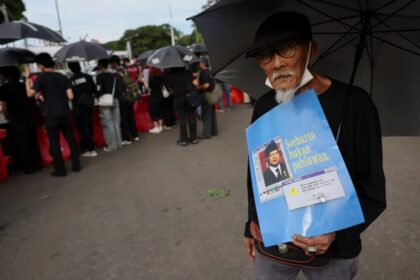Introduction: The New Frontier of Social Media Regulation
Across the Asia Pacific and beyond, governments are rapidly tightening rules around who can access social media. What began as efforts to moderate harmful content has evolved into a new regulatory frontier: controlling who gets to participate in digital spaces at all. From Vietnam’s mandatory ID verification to Australia’s under-16 ban, and similar moves in Europe and the United States, the world is witnessing a profound shift from content moderation to user gatekeeping. This article explores the drivers, methods, controversies, and global implications of this trend, drawing on recent legislation, expert analysis, and the lived realities of users and platforms.
- Introduction: The New Frontier of Social Media Regulation
- Why Are Governments Pushing for Age and Identity Verification?
- How Are Countries Implementing Age and Identity Restrictions?
- Technologies and Methods: How Is Age Verification Enforced?
- The Debate: Safety, Privacy, and the Risk of Exclusion
- Industry Response: Platforms Adapt and Push Back
- Global Trends and the Road Ahead
- Beyond Gatekeeping: Rethinking Digital Safety and Accountability
- In Summary
Why Are Governments Pushing for Age and Identity Verification?
The push for stricter social media access controls is rooted in growing concerns about the safety and well-being of minors online. High-profile cases of cyberbullying, exposure to explicit content, online grooming, and mental health crises have galvanized lawmakers and the public. A 2022 Pew Research Center survey found that 67% of teens use TikTok, while only 32% use Facebook, highlighting the deep integration of social media into young people’s lives. At the same time, reports from organizations like Amnesty International reveal that more than half of young users have experienced racism, bullying, or unwanted sexual advances online.
In response, policymakers argue that robust age and identity verification can:
- Protect minors from harmful or age-inappropriate content
- Reduce the risk of online predators and grooming
- Ensure compliance with privacy and child protection laws
- Increase accountability for online abuse and illegal activity
However, these measures also raise significant questions about privacy, exclusion, and the future of digital rights.
How Are Countries Implementing Age and Identity Restrictions?
Approaches to age and identity verification vary widely, reflecting different legal systems, cultural attitudes, and technological capabilities. Below are some of the most notable examples from around the world.
Asia Pacific: From Vietnam’s Decree 147 to Australia’s Under-16 Ban
Vietnam has enacted Decree 147, requiring all social media users to verify their accounts with a national ID or local phone number. Offshore platforms must store user data locally and provide it to authorities upon request. The law, effective December 2024, is part of a broader effort to combat misinformation and cybercrime, but critics warn it could suppress free speech and erode privacy.
Australia is moving forward with what may become the world’s strictest social media age verification law, banning users under 16 from major platforms like Facebook, Instagram, TikTok, and X. The legislation, introduced by Prime Minister Anthony Albanese, mandates that platforms implement robust age checks—ranging from document verification to biometric age estimation—within 12 months of passage. The eSafety Commissioner will oversee compliance, and companies face fines up to AU$50 million for violations. While the law is lauded for prioritizing child safety, experts and advocacy groups caution that it may isolate vulnerable youth and drive them to less regulated corners of the internet.
Indonesia is considering raising the minimum age for social media use to 18, while Malaysia now requires platforms to obtain operating licenses, further tightening regulatory oversight.
Europe: Digital Identity and the “Digital Majority”
The European Union has taken a multi-pronged approach. The General Data Protection Regulation (GDPR) requires parental consent for processing children’s data under 16 (or lower, depending on the country). The Digital Services Act (DSA) and the Audiovisual Media Services Directive (AVMSD) mandate age assurance and content moderation to protect minors.
Several EU countries are pushing for even stricter measures. France has approved a law requiring platforms to verify users’ ages and obtain parental consent for those under 15. Norway is proposing to raise the minimum age for social media use to 15, using its national digital identity system, BankID, for verification. Spain and Greece are advocating for an EU-wide age block, with mandatory device-level age verification and parental controls.
The EU is also piloting the European Digital Identity Wallet (EUDI), a secure application allowing citizens to store and selectively disclose digital credentials, including age. While some see this as a “gold standard” for privacy-preserving verification, others warn it could erode anonymity and increase surveillance.
United States: A Patchwork of State and Federal Initiatives
The US lacks a unified federal law setting age minimums for social media, but momentum is building. The Children’s Online Privacy Protection Act (COPPA) requires parental consent for users under 13, but enforcement is inconsistent. The proposed Protecting Kids on Social Media Act would set a minimum age of 13 and require platforms to verify ages more robustly.
At the state level, laws are proliferating. Utah and Texas have passed some of the strictest measures, with Texas seeking to ban all users under 18 from social media and requiring app stores to verify ages. Other states, including California, Florida, New York, and Louisiana, have enacted or are considering similar laws. These efforts face legal challenges from civil liberties groups and tech companies, who argue that mandatory verification threatens privacy and free speech.
Other Regions: South Korea, Nepal, and Beyond
South Korea has a long history of government-led identity verification, including the now-repealed Internet Real Name System. Today, platforms like Netflix and Naver require annual age verification using phone numbers, credit cards, or government-issued IDs. While these measures are widely accepted in Korea’s collectivist culture, they have faced criticism for limiting freedom of speech and increasing the risk of data breaches.
Nepal is debating a bill that would end online anonymity and require all social media users to verify their identities, sparking concerns about free expression and government overreach.
Technologies and Methods: How Is Age Verification Enforced?
Social media platforms and regulators are experimenting with a range of age and identity verification technologies, each with its own strengths and drawbacks:
- Self-attestation: Users simply declare their age, but this is easily circumvented and not considered robust.
- Government ID checks: Users upload a photo or scan of an official document. This is more reliable but raises privacy and data security concerns.
- Credit card verification: Used to confirm age, but not all users have access to credit cards, especially minors.
- Biometric age estimation: AI analyzes selfies or videos to estimate age. This can be privacy-preserving if data is not stored, but accuracy and bias are concerns.
- Behavioral analysis: AI infers age based on user behavior, language, and interactions. This is less intrusive but can be error-prone.
- National digital identity systems: Countries like Norway and South Korea use government-backed eIDs for online verification, offering high security but raising questions about surveillance and exclusion.
Platforms like Meta (Facebook, Instagram) and Discord are piloting third-party age-checking services, including facial scans and document uploads. Some, like Yubo, have made age assurance a core part of their user experience, reporting increased trust and safety among users.
The Debate: Safety, Privacy, and the Risk of Exclusion
While the intention behind age and identity verification is to protect vulnerable users, critics warn that blanket restrictions can have unintended consequences:
- Exclusion and Digital Divide: Not everyone has access to government IDs, credit cards, or smartphones. Strict verification can exclude marginalized groups, undocumented individuals, and those in rural or low-income areas.
- Privacy and Data Security: Collecting sensitive personal or biometric data increases the risk of breaches, identity theft, and misuse. Civil liberties groups argue that data minimization and purpose limitation are essential, and that verification should not require more information than necessary.
- Chilling Effect on Free Speech: Tying online activity to real-world identities can deter whistleblowers, survivors, and marginalized communities from speaking out. Anonymity is often crucial for candid self-expression and accessing support.
- Effectiveness and Enforcement: Determined users can circumvent age checks using VPNs, fake IDs, or by migrating to less regulated platforms. Overly blunt bans may push young people into riskier online spaces rather than keeping them safe.
As Sonia Livingstone, a UK scholar of digital literacy, has warned, “Protection that turns into exclusion” undermines young people’s right to participate meaningfully in digital spaces. The challenge is to design systems that are both protective and inclusive.
Industry Response: Platforms Adapt and Push Back
Social media companies are under increasing pressure to comply with a patchwork of global regulations. Some, like Meta and TikTok, have introduced stricter content moderation, default privacy settings for minors, and screen time limits. Others, like Discord and Yubo, are piloting advanced age assurance technologies.
However, the industry is also pushing back against what it sees as unworkable or invasive mandates. Tech giants argue that app store-level verification (as proposed in Texas) could jeopardize user privacy by centralizing sensitive data. Apple, Google, and others have lobbied against such laws, warning of unintended consequences for both users and the broader digital ecosystem.
There is also debate over exemptions and inconsistencies. For example, Australia’s law exempts YouTube (on the grounds of educational value), prompting criticism from competitors like TikTok, who argue that short-form video content is similar across platforms.
Global Trends and the Road Ahead
2025 is shaping up to be a pivotal year for social media regulation. Countries on four continents are moving toward stronger age assurance laws, with heavier fines and stricter enforcement. The UK is preparing to impose “watertight” age verification for adult content, with potential prison sentences for company leaders who fail to comply. The EU is piloting digital wallets for age verification, and the US Congress is debating federal standards.
Yet, the global landscape remains fragmented. Some countries, like Germany, focus on making platforms safer for minors rather than imposing outright bans. Others, like Vietnam and Nepal, are moving toward comprehensive identity verification, raising alarms about surveillance and human rights.
Technological innovation is both a driver and a challenge. New methods like iris-scanning (as explored by Reddit) and AI-based age estimation promise more privacy-preserving solutions, but also introduce new risks and uncertainties. The lack of universal standards means that platforms must navigate a complex web of local laws, often at significant cost and with the risk of legal challenges.
Beyond Gatekeeping: Rethinking Digital Safety and Accountability
Experts and advocacy groups increasingly argue that regulating who can access social media is only part of the solution. The deeper issues lie in how platforms are designed and how they respond to harm:
- Algorithmic Design: Social media algorithms often amplify emotional extremes and addictive behaviors. Addressing these design flaws is crucial for user well-being.
- Reporting and Moderation: Effective, accessible reporting tools and responsive moderation are essential for preventing and mitigating harm.
- Transparency and Accountability: Platforms must be held accountable for their actions (or inaction) when harm occurs, with clear standards and oversight.
As one industry leader put it, “A safer internet is not just one with fewer bad actors. It’s one where harm is taken seriously, where victims are supported, and where platforms are held accountable.”
In Summary
- Governments worldwide are shifting from content moderation to regulating who can access social media, with a focus on age and identity verification.
- Asia Pacific, Europe, the US, and other regions are enacting or debating laws requiring robust verification, often using government IDs, biometrics, or digital identity systems.
- While intended to protect minors and increase accountability, these measures raise concerns about privacy, exclusion, free speech, and effectiveness.
- Technological solutions range from self-attestation to advanced biometrics, but no universal standard exists, and enforcement remains challenging.
- Industry responses vary, with some platforms embracing age assurance and others pushing back against invasive or inconsistent mandates.
- Experts warn that overreliance on gatekeeping can lead to exclusion and migration to less regulated spaces, and call for a broader focus on platform design, moderation, and accountability.
- The future of social media regulation will depend on finding a balance between safety, privacy, and meaningful participation in digital life.












